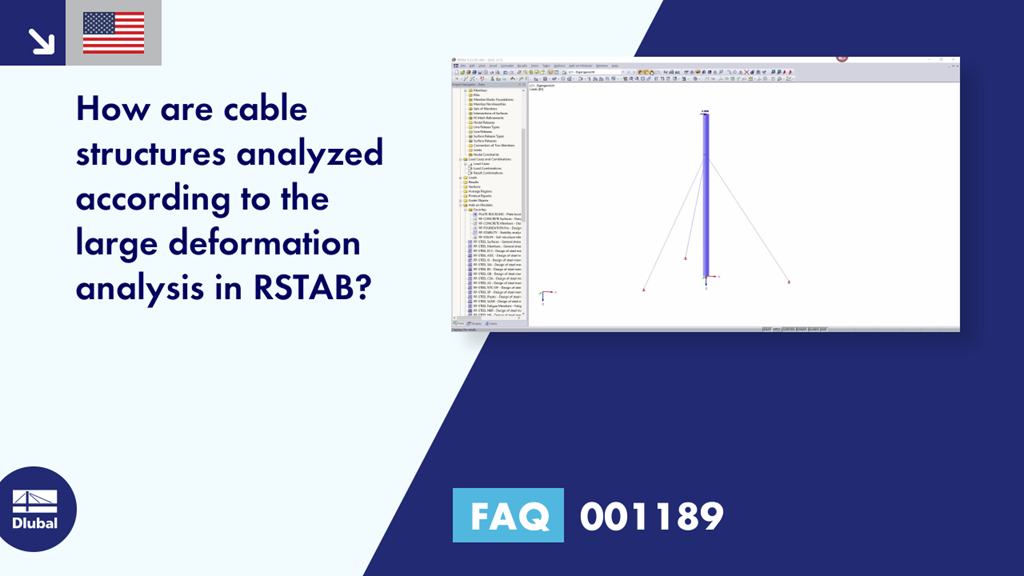Question:
How are cable structures analyzed according to the large deformation analysis in RSTAB?
Answer:
If you design a structure with beams, columns, and cables, RSTAB takes into account the large deformation analysis (cable theory) for the cables only. Cables can only absorb tension; they fail when subjected to negative axial forces.
The "Cable" member type has the effect that the calculation is carried out according to the large deformation analysis so that cable chains do not result in failure, as would be the case of a "tension member on tension member" arrangement. This is the major difference compared to the "Tension" member type. Thus, cables are automatically calculated according to the large deformation analysis, considering longitudinal and transverse forces.
Tension members and cables each have a stiffness in the longitudinal direction, with cables additionally having an ideal stiffness assigned in the transverse direction. This is 1/200 of the stiffness in the longitudinal direction. This stiffness is required to calculate a cable chain.
To correctly determine the cable sag line of the deformed cables, it is necessary to model several connecting cable members (a cable chain). If this division is missing, the cable sag line will not be determined. Thus, the results are not plausible.
